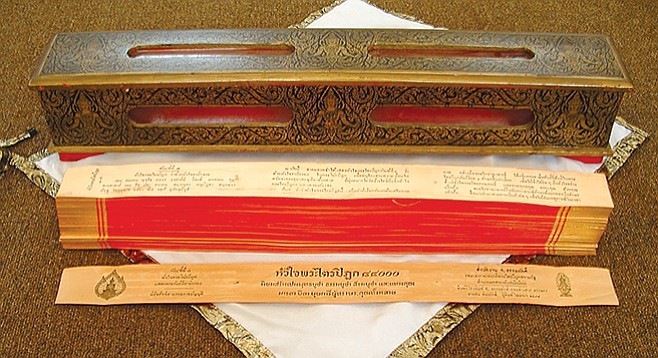 Facebook
Facebook
 X
X
 Instagram
Instagram
 TikTok
TikTok
 Youtube
Youtube

Another time I approached Sañjaya Belatthiputta and, on arrival, exchanged courteous greetings with him. After an exchange of friendly greetings and courtesies, I sat to one side. As I was sitting there I asked him: “Venerable Sañjaya, there are these common craftsmen... They live off the fruits of their crafts, visible in the here and now... Is it possible, venerable sir, to point out a similar fruit of the contemplative life, visible in the here and now?” When this was said, Sañjaya Belatthiputta said to me, “If you ask me if there exists another world [after death], if I thought that there exists another world, would I declare that to you? I don’t think so. I don’t think in that way. I don’t think otherwise. I don’t think not. I don’t think not not. If you asked me if there isn’t another world... both is and isn’t... neither is nor isn’t... if there are beings who transmigrate... if there aren’t... both are and aren’t... neither are nor aren’t... if the Tathagata exists after death... doesn’t... both... neither exists nor doesn’t exist after death, would I declare that to you? I don’t think so. I don’t think in that way. I don’t think otherwise. I don’t think not. I don’t think not not.”
– from “The Fruits of the Contemplative Life”in the Pali Canon.
Sanjaya Belatthiputta was an Indian mystic and teacher who lived around the 6th or 5th century B.C. A contemporary of the Buddha, he was best known for propounding a skeptical and agnostic philosophy distinct in that way from the two main Indian philosophies of the day, Buddhism and Jainism. Although no writings of his were passed on, sayings and anecdotes ascribed to the philosopher appear in the Pali Canon, a collection of three books of Buddha’s sayings considered the primary texts of Buddhist teaching, and often juxtaposed, as the above passage illustrates, with the teachings of rival philosophies.


Another time I approached Sañjaya Belatthiputta and, on arrival, exchanged courteous greetings with him. After an exchange of friendly greetings and courtesies, I sat to one side. As I was sitting there I asked him: “Venerable Sañjaya, there are these common craftsmen... They live off the fruits of their crafts, visible in the here and now... Is it possible, venerable sir, to point out a similar fruit of the contemplative life, visible in the here and now?” When this was said, Sañjaya Belatthiputta said to me, “If you ask me if there exists another world [after death], if I thought that there exists another world, would I declare that to you? I don’t think so. I don’t think in that way. I don’t think otherwise. I don’t think not. I don’t think not not. If you asked me if there isn’t another world... both is and isn’t... neither is nor isn’t... if there are beings who transmigrate... if there aren’t... both are and aren’t... neither are nor aren’t... if the Tathagata exists after death... doesn’t... both... neither exists nor doesn’t exist after death, would I declare that to you? I don’t think so. I don’t think in that way. I don’t think otherwise. I don’t think not. I don’t think not not.”
– from “The Fruits of the Contemplative Life”in the Pali Canon.
Sanjaya Belatthiputta was an Indian mystic and teacher who lived around the 6th or 5th century B.C. A contemporary of the Buddha, he was best known for propounding a skeptical and agnostic philosophy distinct in that way from the two main Indian philosophies of the day, Buddhism and Jainism. Although no writings of his were passed on, sayings and anecdotes ascribed to the philosopher appear in the Pali Canon, a collection of three books of Buddha’s sayings considered the primary texts of Buddhist teaching, and often juxtaposed, as the above passage illustrates, with the teachings of rival philosophies.
Comments